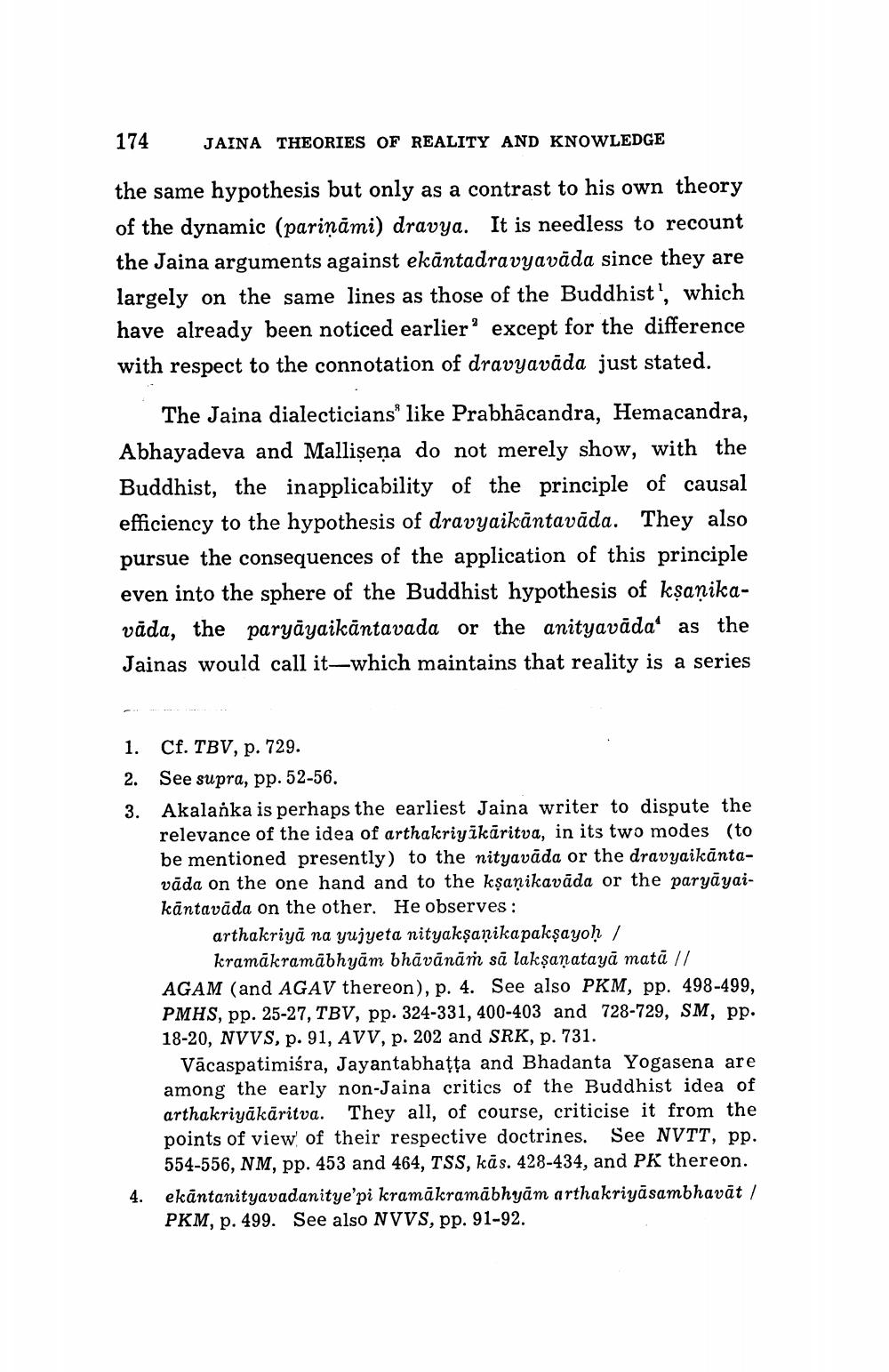________________
174
JAINA THEORIES OF REALITY AND KNOWLEDGE
the same hypothesis but only as a contrast to his own theory of the dynamic (pariņāmi) dravya. It is needless to recount the Jaina arguments against ekāntadravyavada since they are largely on the same lines as those of the Buddhist', which have already been noticed earlier' except for the difference with respect to the connotation of dravyavāda just stated.
The Jaina dialecticians like Prabhācandra, Hemacandra, Abhayadeva and Mallişena do not merely show, with the Buddhist, the inapplicability of the principle of causal efficiency to the hypothesis of dravyaikantavāda. They also pursue the consequences of the application of this principle even into the sphere of the Buddhist hypothesis of kṣanikavāda, the paryāyaikantavada or the anityavada' as the Jainas would call it-which maintains that reality is a series
1. Cf. TBV, p. 729.
2.
3.
See supra, pp. 52-56.
Akalaňka is perhaps the earliest Jaina writer to dispute the relevance of the idea of arthakriyäkäritva, in its two modes (to be mentioned presently) to the nityavada or the dravyaikāntavada on the one hand and to the kṣaṇikavāda or the paryāyaikäntavāda on the other. He observes:
arthakriya na yujyeta nityakşanikapakṣayoḥ /
kramakramabhyam bhāvānāṁ sa lakṣaṇatayā matā //
AGAM (and AGAV thereon), p. 4. See also PKM, pp. 498-499, PMHS, pp. 25-27, TBV, pp. 324-331, 400-403 and 728-729, SM, pp. 18-20, NVVS, p. 91, AVV, p. 202 and SRK, p. 731.
Vācaspatimiśra, Jayantabhaṭṭa and Bhadanta Yogasena are among the early non-Jaina critics of the Buddhist idea of arthakriyäkäritva. They all, of course, criticise it from the points of view of their respective doctrines. See NVTT, pp. 554-556, NM, pp. 453 and 464, TSS, kās. 428-434, and PK thereon.
4. ekantanityavadanitye'pi kramākramābhyam arthakriyāsambhavät / PKM, p. 499. See also NVVS, pp. 91-92.




